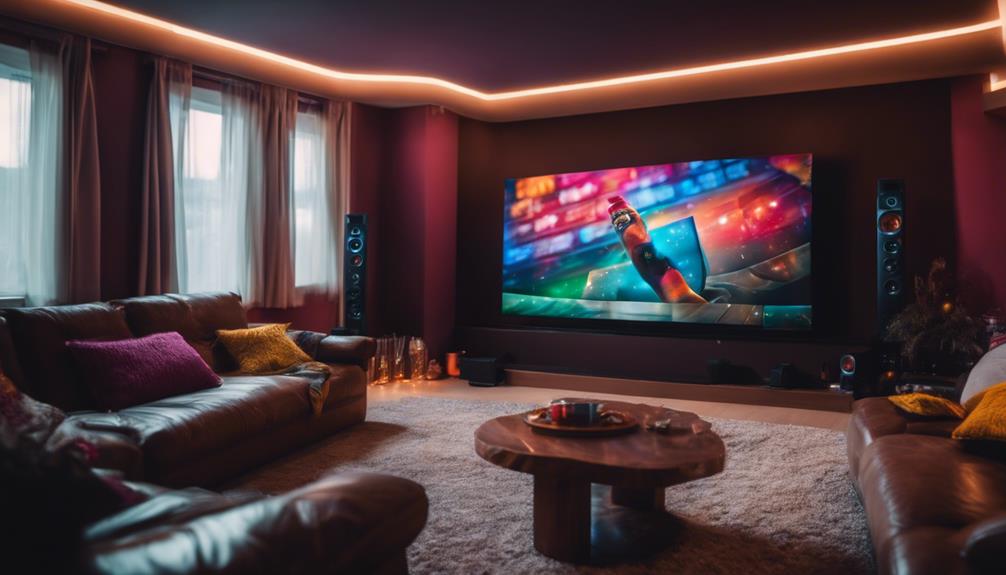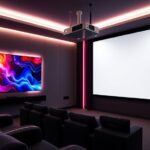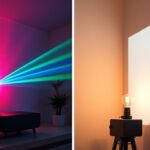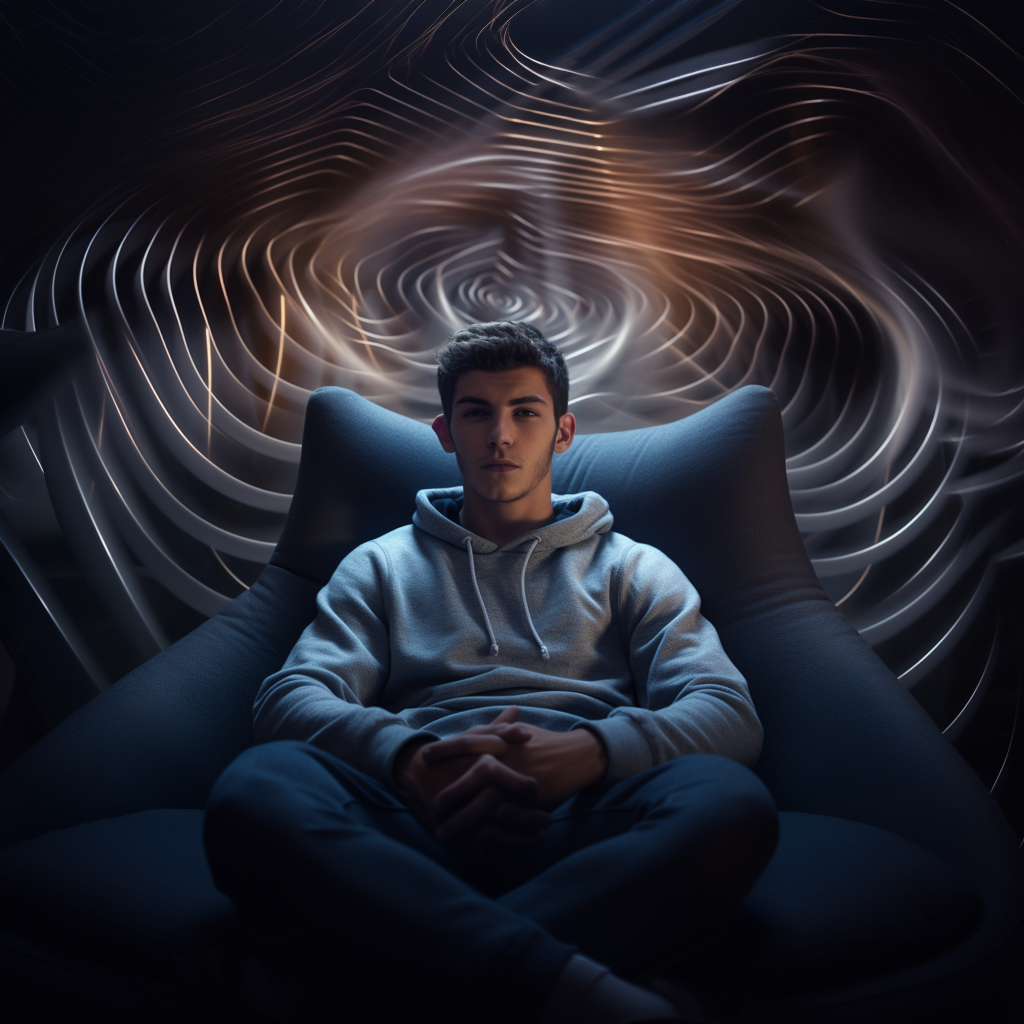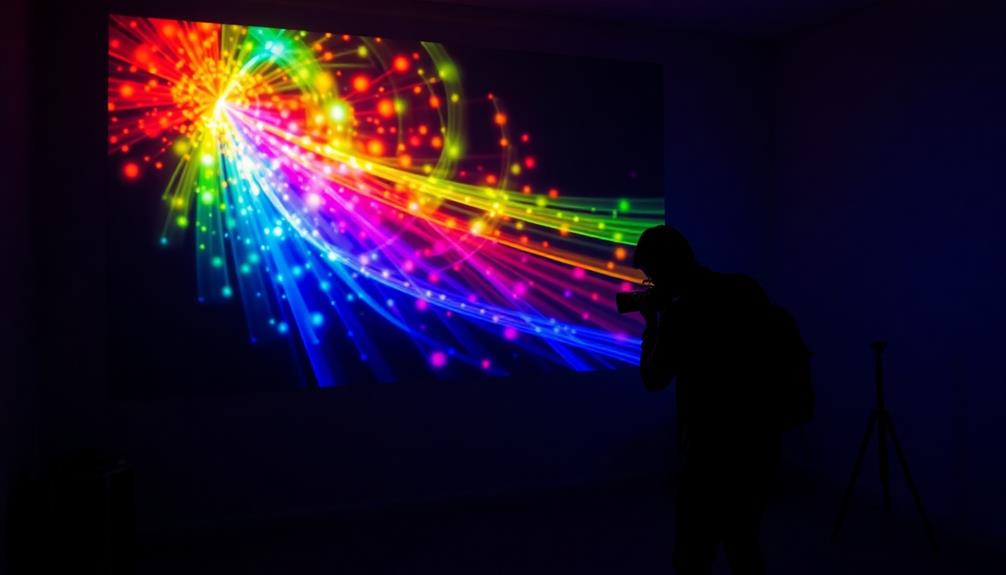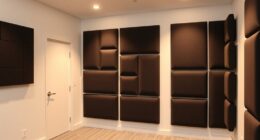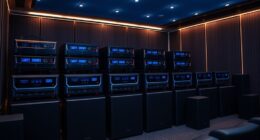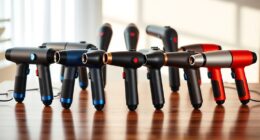When you're deciding between a projector and a TV for your home entertainment, think about your room's lighting and budget. Projectors can save you up to 40% per screen inch, making them more affordable for larger sizes. However, they shine in dark rooms and struggle with brightness in well-lit spaces. TVs are easier to set up, offer superior image quality, and work well in various lighting conditions. If you want clarity without hassle, a TV might be the way to go. Stick around to explore what fits your specific needs best and the latest trends in home entertainment.
Key Takeaways
- Projectors are cost-effective for large screen sizes, offering lower prices per inch compared to TVs.
- TVs provide superior brightness, contrast, and color accuracy, making them ideal for well-lit rooms.
- Projectors perform best in dark environments, while TVs maintain clarity in various lighting conditions.
- Installation and maintenance for TVs are simpler, whereas projectors require more setup and ambient light control.
Price and Performance Analysis
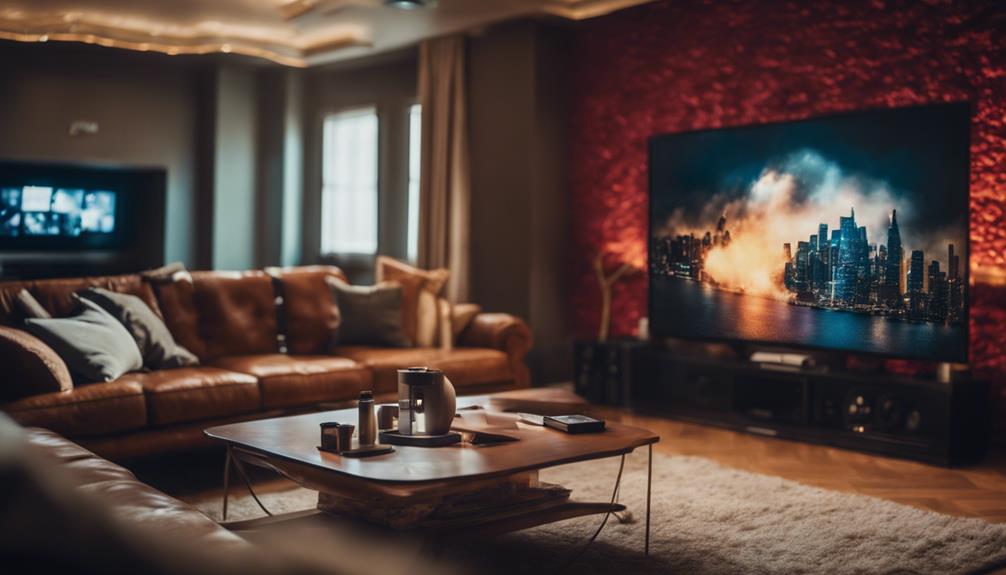
When weighing the price and performance of projectors versus TVs, you'll find that high-quality projectors often match the cost of a decent 75-inch TV, making larger screen sizes equally accessible. While this might seem appealing, you should consider the performance differences.
TVs generally excel in brightness and contrast, making them a better choice for well-lit rooms. If you plan on watching during the day, a TV might serve you better.
On the flip side, projectors can provide a more economical cost per screen inch, with average prices being about 40% lower than large TVs. This makes them a budget-friendly option for those wanting a cinematic feel at home. However, keep in mind that high-end projectors can get pricey, so you'll need to weigh that against your budget.
Moreover, projectors often require additional costs for screens and mounting, potentially affecting the overall cost.
Image Quality Comparison

Considering the price and performance factors, it's important to examine how image quality varies between projectors and TVs. When it comes to delivering a superior viewing experience, OLED TVs stand out with exceptional color accuracy and contrast. Projectors, while improving with technology, often struggle in brightness and overall performance.
Here's a quick comparison:
| Feature | Projectors | TVs |
|---|---|---|
| Brightness | Generally lower than TVs | High brightness levels |
| Contrast | Often lacks necessary ratios | Superior contrast ratios |
| Color Accuracy | Can achieve wide color gamut | Exceptional color accuracy |
| High Dynamic Range | Limited performance in HDR | Excellent HDR support |
In well-lit environments, projectors may not provide the vibrant images you'd expect. They typically excel in dark rooms but can't match the clarity of TVs under various lighting conditions. While high-end projectors can enhance color accuracy, they still lag behind TVs in brightness and contrast, making them less ideal for daytime viewing. Overall, if image quality is your priority, TVs generally offer a more reliable and superior performance.
Viewing Environment Considerations
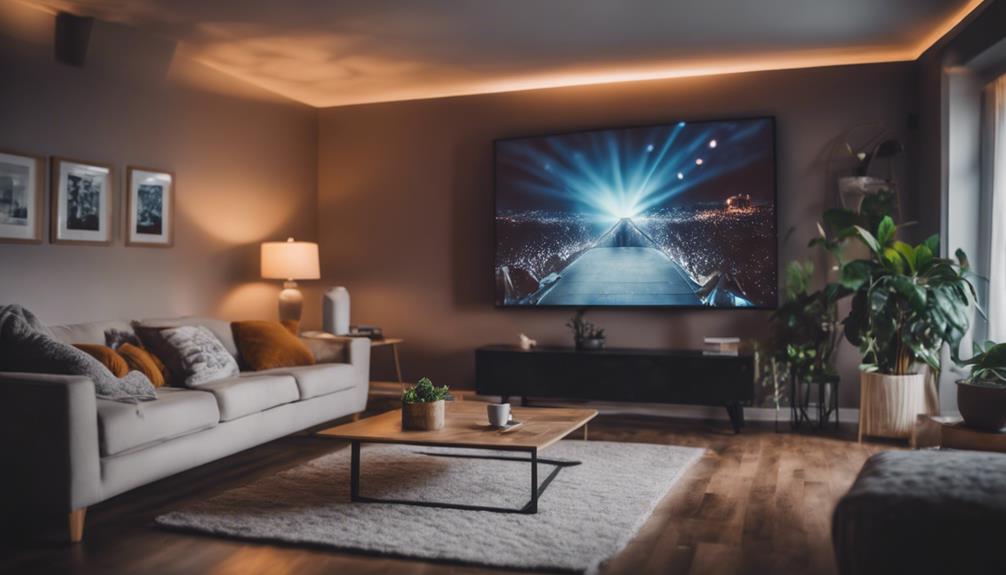
To guarantee the best viewing experience, it's important to evaluate the lighting conditions and room setup before deciding between a projector and a TV. Your viewing environment plays a vital role in determining which option performs better.
Consider these factors when making your choice:
- Ambient light: Projectors thrive in dark rooms, while TVs excel in bright settings.
- Brightness: Projectors need at least 3,000 lumens for clear images in well-lit spaces.
- Room dimensions: The size and layout can affect how well either option performs.
If you're leaning towards a projector, remember it performs best in dark rooms, where ambient light is minimal. On the other hand, TVs provide consistent clarity regardless of lighting conditions, making them versatile for home entertainment.
If your space has significant ambient light, you might find that a TV offers a more satisfying viewing experience with clear images.
Ultimately, understanding your specific room dimensions and lighting scenarios will help you make the right choice for your home entertainment setup.
User Preferences and Trends

As you weigh your options between projectors and TVs, it's clear that user preferences have evolved, leaning heavily towards the convenience and quality that modern TVs offer.
With superior image quality and lower maintenance requirements, TVs have become the go-to choice for many home theater enthusiasts. The market is booming for larger screen sizes, and prices have dropped considerably, making these TVs accessible to a wider audience.
While a projector can provide an immersive experience, it often requires specific conditions to shine—like a dark room—limiting its versatility.
Many consumers are unaware of the incredible potential a projector holds, leading them to favor the user-friendly, familiar nature of TVs.
As brightness improves and display technology advances, projectors may regain traction, but for now, consumer preferences lean heavily towards TVs.
They offer the versatility you need for various viewing options, whether it's binge-watching your favorite series or enjoying a movie night with friends.
Ultimately, the ease of use and quality of modern TVs make them a compelling choice in today's entertainment landscape.
Setup and Maintenance Factors

Setting up a projector can be more complex than simply placing a TV on a stand, often requiring careful planning and additional equipment. You'll need to take into account factors like screen placement, ceiling mounts, and the layout of your room. Here are some setup elements to keep in mind:
- Screen type and size: Choosing the right screen can enhance your viewing experience.
- Installation location: Projectors work best in dark environments, so find a suitable spot.
- Ambient light control: You may need blackout curtains for ideal performance.
In contrast, TVs offer straightforward installation. You can place them on a stand or mount them on a wall with minimal effort.
Maintenance also differs considerably. Projectors often require upkeep like bulb replacements and cleaning projection surfaces, which can add to long-term costs. TVs generally have lower maintenance needs and longer lifespans without these requirements.
Frequently Asked Questions
Is a Home Projector Better Than a Tv?
Whether a home projector's better than a TV depends on your preferences. If you love big screens and dark rooms, projectors shine. But for bright spaces and convenience, TVs usually outperform projectors in everyday use.
Is It Smart to Use a Projector as an Everyday Tv?
Using a projector as your everyday TV isn't always smart. You'll need dark rooms for ideal viewing, might invest in better audio, and face more setup hassle compared to the convenience of a regular TV.
What Is Better for Your Eyes, TV or Projector?
When considering what's better for your eyes, projectors typically emit less blue light and provide a gentler illumination. You'll likely experience reduced eye strain and fatigue during longer viewing sessions with a projector compared to a TV.
Is a Projector or TV Better for a Dark Room?
In a dark room, a projector's larger image and enhanced detail create an immersive experience you won't get from a TV. Just make sure you control ambient light for peak performance and enjoy movie nights like never before.
Conclusion
In the battle of projector vs. TV, it often comes down to your unique needs and space.
If you crave a cinematic experience and have the room, a projector can transform movie night.
But if you want convenience and vibrant colors in a smaller setup, a TV might be your best bet.
Funny enough, your choice could hinge on something as simple as your living room layout.
So, what'll it be—big screen thrills or cozy comfort?
Hello, I’m Art, and I’m excited to be a part of the 1Home Theatre Projector team. As a writer, I’m here to contribute my knowledge and insights to help you achieve the ultimate home cinema experience. I understand that making decisions in the world of home entertainment can be complex, and I’m here to simplify the process for you.

